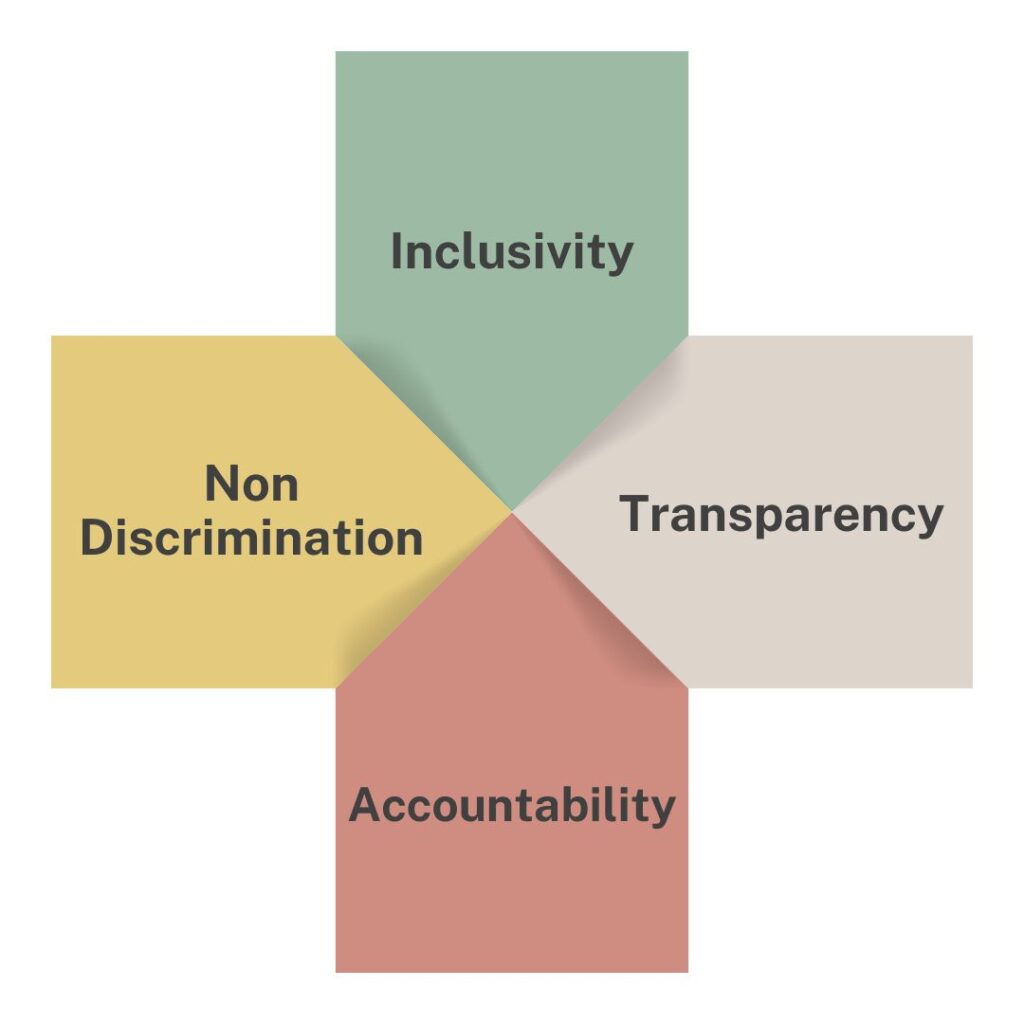Artificial Intelligence is changing our world fast. But as AI gets smarter, we need to make sure it’s fair to everyone. Let’s explore what does the principle of fairfairness means in General AI.
The principle of fairness in Gen AI entails creating systems that treat all people equally, without bias or discrimination. It means AI should make decisions based on relevant factors, not on things like race or gender.
In this blog, we’ll dive into why fairness matters in AI, the challenges we face, and how we can build fairer AI systems. Get ready to learn about this important topic!
Table of Contents
- What is Fairness in Gen AI?
- Principles of Fairness in Gen AI
- Common Challenges to Fairness in Gen AI
- Implementing Fairness in Gen AI
- Real-World Examples of Fairness Issues in Gen AI
- Conclusion
What is Fairness in Gen AI?
Fairness in General AI means creating smart computer systems that treat everyone equally. It’s about making sure AI doesn’t favor some people over others.
Think of it like a fair referee in a game. The AI should make decisions based on facts, not on things like someone’s skin color or where they come from.
When AI is fair, it helps everyone have the same chances. This is important because AI is used in many areas of our lives, from job applications to loan approvals.
Principles of Fairness in Gen AI

There are several key principles that guide fairness in General AI:
Non-discrimination
- AI should not treat people differently based on race, gender, age, or other protected characteristics
- Decisions should be based on relevant factors only
Inclusivity
- AI systems should be designed to work well for all groups of people
- This means considering diverse needs and perspectives during development
Transparency
- The way AI makes decisions should be clear and understandable
- People should be able to know why an AI system made a particular choice
Accountability
- There should be ways to check if an AI system is being fair
- If problems are found, there should be clear steps to fix them
Common Challenges to Fairness in Gen AI
Creating fair AI isn’t easy. One big problem is biased data. If an AI learns from unfair information, it might make unfair choices.
Another challenge is that the people making AI might not realize their own biases. This can lead to AI systems that favor certain groups without meaning to.
Sometimes, it’s hard to spot unfairness in AI decisions. The way AI thinks can be complex, making it tough to see why it chose something.
Balancing fairness with other goals, like accuracy or speed, can also be tricky.
Implementing Fairness in Gen AI
To make AI systems fairer, we can:
Use Diverse Data:
- Collect information from many different groups of people
- Make sure the data represents everyone fairly
Test For Bias:
- Regularly check AI systems for unfair decisions
- Use special tools to spot hidden biases
Build Diverse Teams:
- Include people from different backgrounds in AI development
- This brings in various viewpoints and helps catch potential issues
Make AI Explainable:
- Design AI that can show how it reaches decisions
- This helps people understand and trust AI
Set Clear Fairness Goals:
- Define what fairness means for each AI system
- Measure how well the AI meets these goals
Keep Learning and Improving:
- Stay updated on new fairness techniques
- Be ready to update AI systems as we learn more
Real-World Examples of Fairness Issues in Gen AI
Here are the real-world examples of fairness issues in AI:
Facial Recognition Problems
Some facial recognition AI has trouble identifying people with darker skin. This led to wrong matches and unfair treatment. Companies are now working to make these systems better at recognizing all faces equally.
Job Application Screening
An AI used by a big company to screen job applications favored men over women. It learned this bias from old hiring data. When it was discovered, the company had to fix the AI to give everyone a fair chance.
Loan Approval Bias
Some AI systems used for approving loans were found to give lower credit limits to women, even when they had similar qualifications as men. This showed how AI can accidentally create unfair financial situations.
These examples show why it’s so important to check AI for fairness and fix problems when we find them.
Conclusion
In conclusion, fairness in General AI is crucial for creating a just and equal future. We’ve learned that it means treating everyone equally, without bias. While there are challenges like biased data and hidden prejudices, there are also ways to make AI fairer. By using diverse data, testing for bias, and building inclusive teams, we can create AI systems that work well for everyone. Remember, fair AI isn’t just a tech issue – it affects our daily lives. As AI becomes more common, it’s up to all of us to stay aware and demand fairness in these powerful systems.

